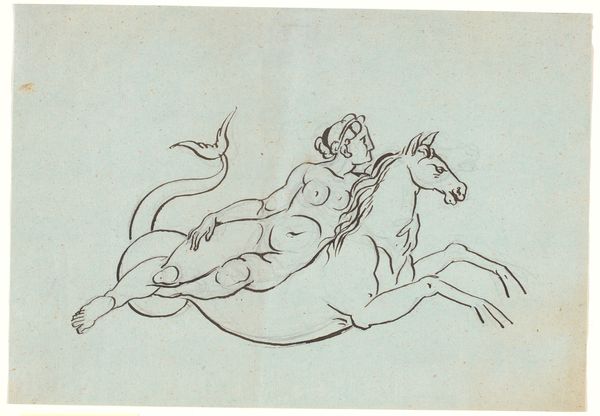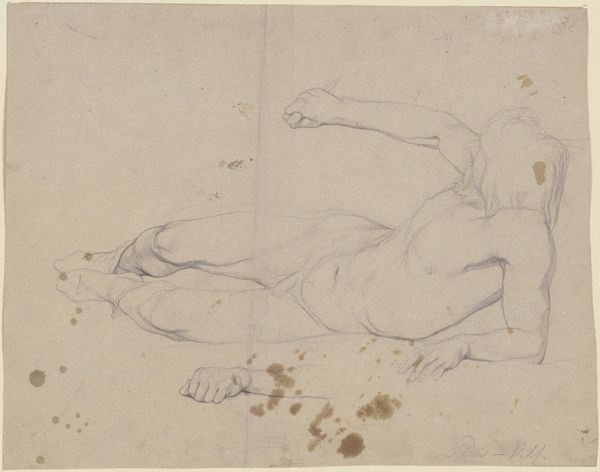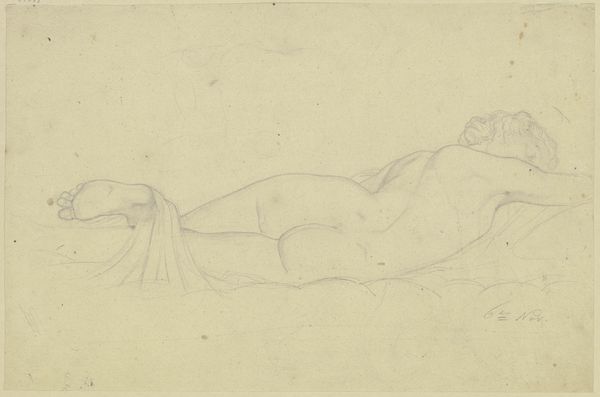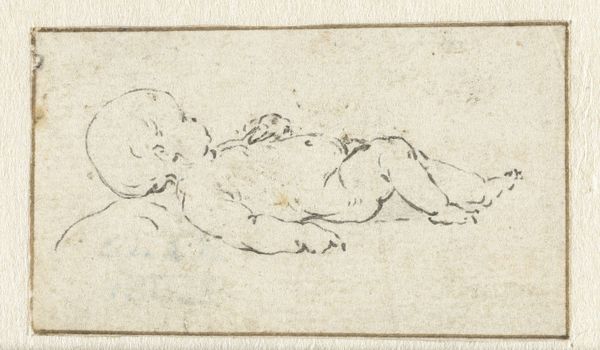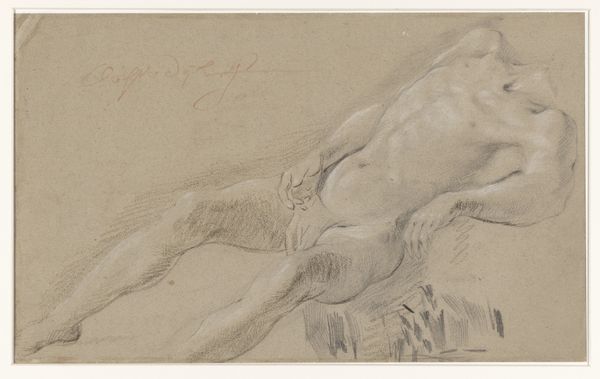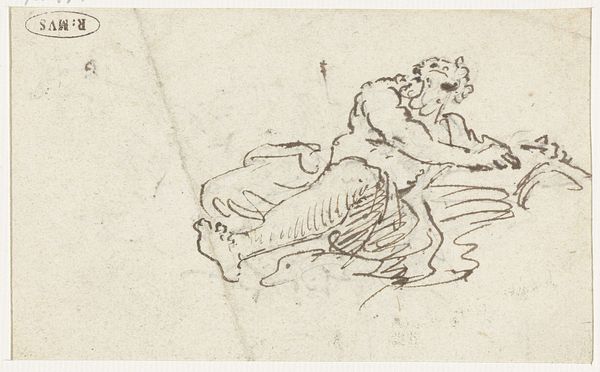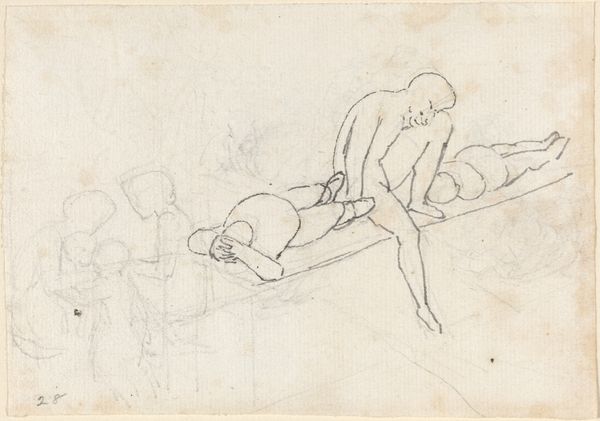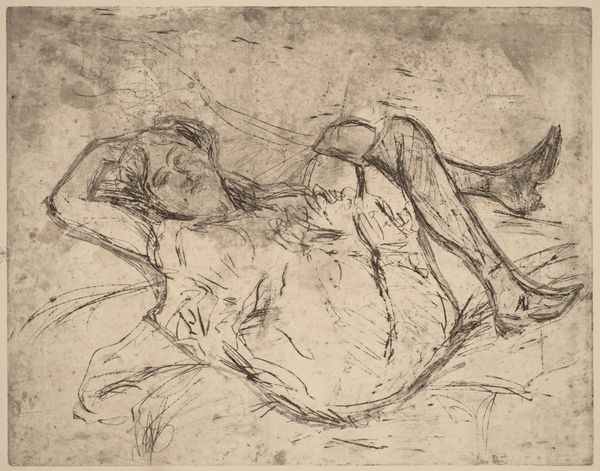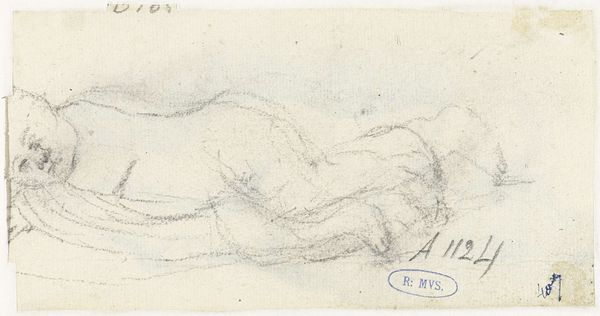
Odysseus og Kalypso, liggende nøgne på et leje 1802 - 1805
0:00
0:00
drawing, ink
#
drawing
#
allegory
#
pen sketch
#
ink
#
romanticism
#
pen-ink sketch
#
nude
#
erotic-art
Dimensions: 141 mm (height) x 231 mm (width) (bladmaal)
Editor: Here we have Nicolai Abildgaard’s “Odysseus og Kalypso, liggende nøgne på et leje,” created between 1802 and 1805. It's an ink drawing, quite small, and what strikes me most is the raw energy of the lines. What do you see in this piece? Curator: Primarily, I'm drawn to the artist's deployment of line to convey form and emotion. Note the contrast between the decisive, almost calligraphic, strokes defining Odysseus’s physique and the softer, more sinuous contours of Calypso. The linear quality suggests the underlying structure, the very bones and muscles of the figures. How do these differences in line affect your understanding of the subjects? Editor: I guess it makes Odysseus seem more...grounded, almost burdened, while Calypso feels more fluid and ethereal. Is that something intentional, you think? Curator: Undoubtedly. The contrast could be interpreted through the lens of classical versus romantic sensibilities. Odysseus is rendered with an emphasis on anatomical accuracy, hearkening back to classical ideals, while Calypso is defined by a more fluid and emotional expressiveness. Note how her pose seems to melt into the pillow, while Odysseus occupies a clear, delineated space. Consider, also, the overall composition and the balance the artist strikes between the figures themselves and their relationship to the negative space of the page. It almost suggests a duality, a conflict represented visually. Editor: That's fascinating. I hadn’t considered how much the *way* they were drawn affected my reading of their characters. Thank you! Curator: A work's structure can guide us to a deeper appreciation of its meaning.
Comments
No comments
Be the first to comment and join the conversation on the ultimate creative platform.
